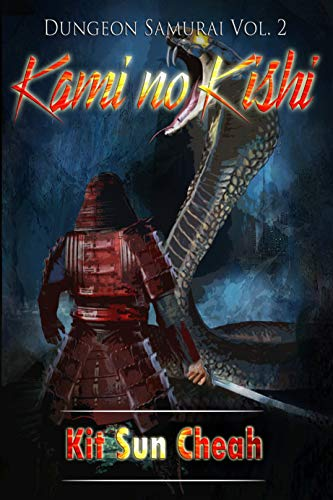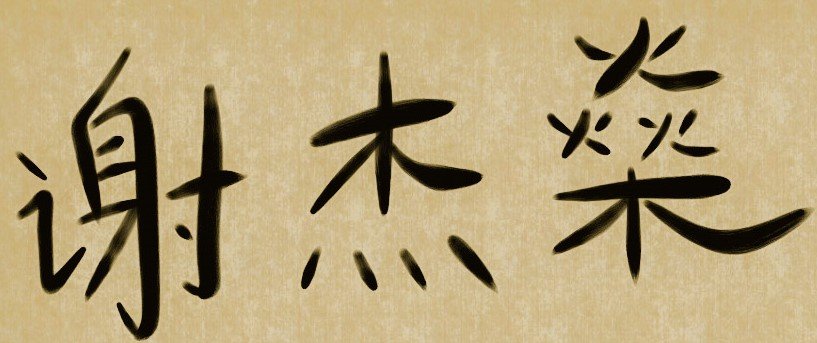
Everybody loves main characters who grow into heroes. Over the length of a series, tested in fire and steel, they overcome their weaknesses, become even stronger and more capable, and become more than they are. Indeed, character growth is the foundation of shounen manga — readers want to see the hero grow from a zero to a hero.
But what about the bad guys?
Everybody loves action scenes. But the heart of an action scene is uncertainty. There is always the possibility that the hero may not win, that the girl will be lost, that the bad guys win. With uncertainty comes tension and drama, with the hero struggling against the odds, making the final victory all the sweeter.
But when the hero is too powerful for his adversaries to handle, boredom sets in.
This is a major design consideration for role playing games. When the player begins his journey, he is a level 1 nobody, a weakling little different from a civilian. The monsters in the starting area may be low-level mobs, but they still pose a significant threat to such a weak hero. Through struggle and conflict, the hero steadily grows more powerful, and faces even more dangerous foes.
But if he returns to the starting area to fight the trash mobs, the game stops being fun.
The player already knows the monsters’ movesets and tactics. The hero is so powerful that the monsters can’t hope to inflict any more than scratch damage, while the hero can slay the monsters at leisure. You can literally play through the segment with your eyes closed and still be assured of victory. You might even spend more time on transition screens and victory animations than in combat.
The only thing left to experience is boredom.
Likewise, in other fictitious media, readers get bored if the heroes constantly and easily outclass the villains. Sherlock Holmes chases the most intelligent and fiendish criminals of his time, because his talents would be wasted on pursuing lesser scum who don’t know how to conceal their crimes. Batman fights supervillains because no street thug can match his combination of brains and brawn, and whenever he does fight ordinary henchmen, the bad guys always outnumber and outgun him. If a story demands that the hero confront a petty crook who he clearly outclasses, the plot either blazes through the scene as quickly as possible, or attempts to create drama through other means.
For a conflict to hold emotional weight, all parties involved must be evenly matched — or the bad guys must be more powerful than the good guys. And if the hero of a series grows stronger with each installment, then so too must his adversaries.
The Fine Art of Villain Growth
Series tend to have two kinds of villains: villain of the installment and recurring villains. The former shows up just for that episode or book, then fades to black. The latter poses a constant threat throughout the series, serving as the hero’s nemesis and possibly the final boss of the story arc.
Both kinds of baddies must level up throughout the series.
In the case of a villain of the installment, there are two ways to achieve this. The hero, after growing stronger, confronts even more dangerous enemies. Alternatively, as word of the hero’s exploits spreads, he attracts the attention of more powerful foes, who decide to take him down before he can do the same unto them.
Leveling up villains of the installment is pretty straightforward. He could have powerful allies able to pull strings for him, henchmen to do his bidding, deadly and exotic armaments, and so on. It is simply sufficient that he poses a credible threat to the hero.
Leveling up recurring villains is trickier. Every time the hero and the recurring villain confront each other, they are both gathering information about each other. They are learning how the other thinks and acts, what resources and allies he has access to, his skills and secret techniques, and so on.
If both sides learn everything there is to know about each other at the first encounter, future fights will become predictable. And you don’t want predictability.
Concealment and deception is key. Both parties should strive to conceal as much as possible from the other side as possible, unleashing secret techniques only in desperate situations or when confident there will be no survivors to tell the tale. They should hide their efforts to get stronger and obtain more allies and resources from the other, while simultaneously trying to learn more about their foes.
When it comes time to decide how to level up your villain, focus on asymmetric adaptation.
Thy Fearful Asymmetry
Striking the opponent’s weakness with your strengths is the paramount principle of war.
Converting your enemy’s strength into a weakness is even better.
In most stories, you’ll see villains attempt to match the heroes by their own rules. In My Hero Academia, the heroes have grown so strong, protagonist Deku is acknowledged as the successor of All Might; to compensate, the current story arc focuses on the villains growing stronger in the midst of a supervillain battle royale. In RPGs, you’ll see monsters with higher stats, heavier defenses, and more powerful attacks.
While this approach is easy, it is not the acme of skill. The acme of skill lies in neutralizing the opposition’s strengths.
During the Vietnam War, the Americans enjoyed a decisive firepower advantage. With their radios, American infantry in the field could call down artillery and air support, obliterating massed Viet Cong troops in an instant. After making contact, they preferred to hang back, pin the enemy in place, then erase the enemy position with overwhelming fires. The VC responded using a tactic called ‘hanging on the belt’: aggressively closing in with the Americans, maneuvering so close to them the Americans didn’t dare to call for fire support for fear of friendly fire. In this manner, the VC turned an American strength into a weakness.
People who operate at the highest echelons of violence understand the principle of asymmetric adaptation. They don’t adapt to match their enemy’s strengths; they adapt to neutralise these strengths and capitalize on their weaknesses.
When thinking about how to level up your villain, start with what he knows and what he *thinks *he knows of the hero, then choose a tactic that falls within the villain’s means. If the hero is a lone wolf, the villain will hire an army of goons. If the villain believes the hero is a ninja who operates from the shadows, taking down henchmen one by one, then he will have his minions operate in buddy teams and equipment them with flashlights. If the hero specializes in close quarters techniques, the villain will take him out from long range.
A great example of this is in the video game Metal Gear Solid V: the Phantom Pain. Throughout the game, the AI tracks the player’s tactics and employs countermeasures. Cameras and land mines will appear along likely infiltration routes. If the player is fond of night time approaches, guards will be equipped with night vision goggles. Players who prefer headshots will soon realise that everyone is wearing a helmet, while those who prefer hand-to-hand techniques will face heavily-armed and -armored guards resistant to martial arts and equipped for close quarters battle.
In my own work, Dungeon Samurai, I avoided the sensation of grinding by constantly upping the threat the monsters and traps posed. In Vol. 1, when the samurai began their expeditions on the first and second levels, they encounter monsters who rush at them in wild mobs. With their crossbows and spears, the samurai can pick off the monsters at long range with relative ease, so long as they can keep their cool. If everything goes wrong, the human clerics can chant prayers, calling in divine intervention. The monsters on the lower floors adapt by adopting battle tactics and fighting in formations. Later still, the monsters wear armor and carry large shields specifically designed to neutralize the samurai’s range advantage, forcing the samurai into desperate close quarter encounters.
For Vol. 2, I continued escalating the threat. More powerful and deadly monsters appear, so powerful even the nominally secure forward operating bases are at risk. Some monsters can use dangerous magic, evening the odds against the clerics and then some. Others are gifted with special skills, the same as the human warriors. Having learned from the battles on the upper floors, the monsters on the lower floors adopt new weapons, armor, and tactics, posing an even greater risk to the samurai.
Through the principle of asymmetric adaptation, the heroes can’t simply pursue the path of MOAR POWER. They can’t just spend more time in the gym, at the range or whatever. They have to think about the new threat the enemy poses, and change accordingly. This presents a far more interesting dynamic to confrontations than a simple arms race.
Steel Sharpens Steel
Believable heroes aren’t stupid.
Once they see villains maneuvering to counter them, the humans will change their tactics and equipment accordingly. Now they must struggle to patch their weaknesses, shore up their strengths, and adapt to the new threat they face.
At this stage, the ball is now in the heroes’ court. With the villains having upgraded themselves to fight the heroes, the heroes must in turn level up to face the new threat. They must seek out information about the enemy, learn their new strengths and weaknesses, then create an asymmetric advantage through adaptation.
Done properly, the act of leveling up the villains initiates a virtuous cycle of growth. One party grows, the other party adapts; when the other party grows to adapt, the first must change also. With every iteration, the stakes and the dangers grow higher and wider; both sides take casualties and enlist recruits; and the conflict between them intensifies. This is an arms race, with each side seeking a decisive advantage, and the winner takes all.
From a storytelling perspective, this dynamic feeds and shapes character growth — for the heroes. Driven by the desire to defeat their foes, or at least survive the new threat, they have clarity and direction for future development.
Done properly, leveling up a bad guy doesn’t just make him more powerful — it makes the hero stronger too.
—

To find out how I made the monsters of Dungeon Samurai even more vicious, check out Dungeon Samurai Vol. 2: Kami no Kishi here!
To stay updated on writing news and promotions, sign up for my mailing list here!
Leave a Reply